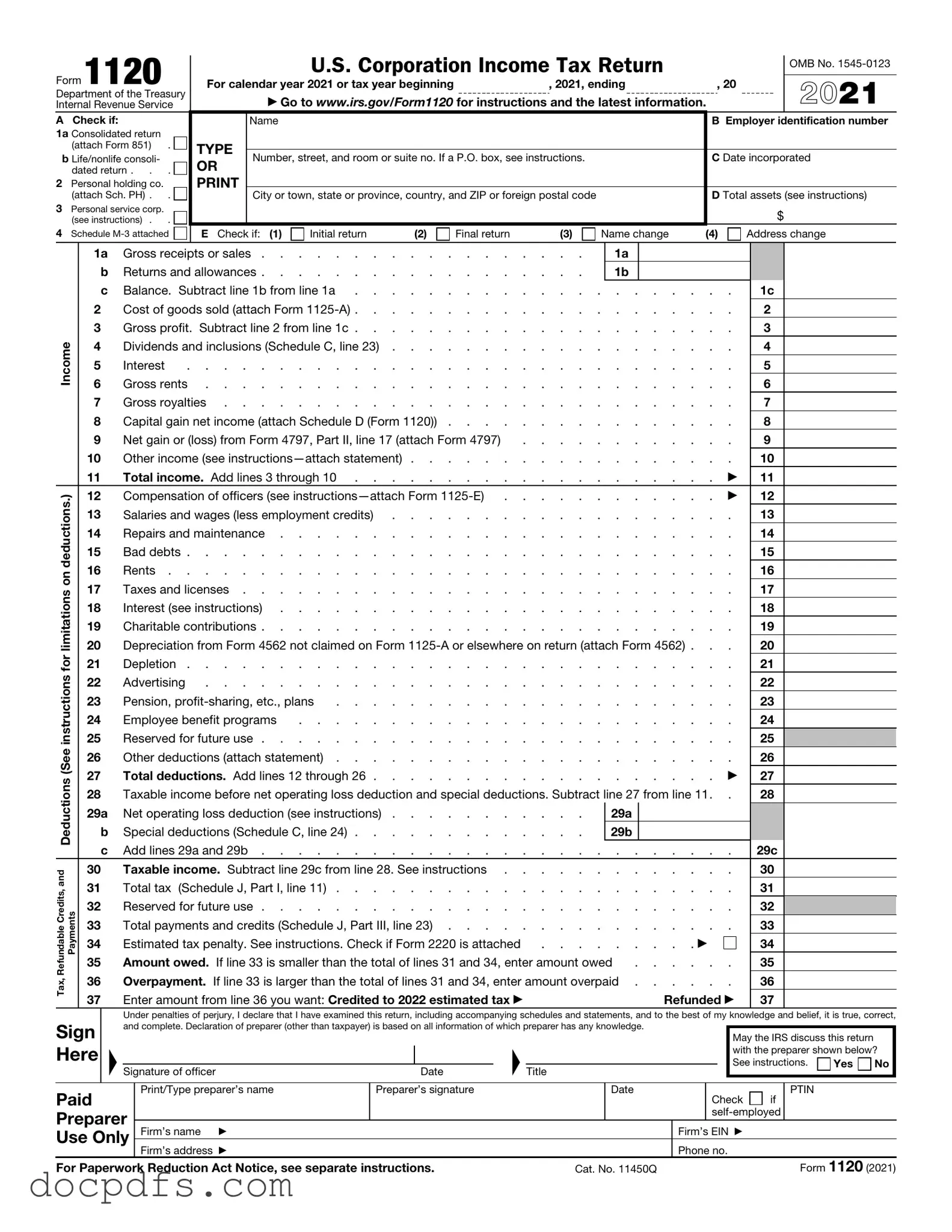The IRS 1120 form is a critical document for corporations operating within the United States, serving as the official means to report income, gains, losses, deductions, and credits. Corporations, whether they are C corporations or certain types of foreign entities, must file this form annually to ensure compliance with federal tax regulations. The form requires detailed information about the company’s financial activities over the tax year, including revenue from sales, cost of goods sold, and various expenses. Additionally, it allows corporations to claim certain deductions and credits that can significantly impact their overall tax liability. Filing the 1120 is not just a regulatory requirement; it is an essential step for businesses to maintain their standing and plan for future financial strategies. Understanding the nuances of this form can help corporations navigate the complexities of tax obligations while maximizing potential benefits. Timely and accurate filing is crucial, as failure to do so may result in penalties or interest charges, making it imperative for corporate entities to pay close attention to their tax responsibilities.
